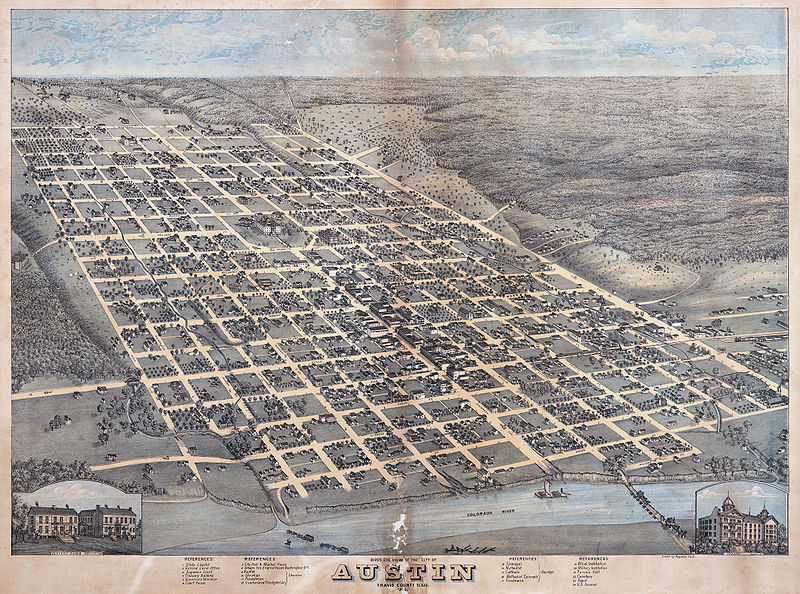The Untold Stories of Shoal Creek – Wood Street Property
July 3, 2014 | By Shoal Creek Conservancy
Shoal Creek Conservancy recently nominated the 702 Wood Street property, located along the Shoal Creek trail just north of the West 6th Street Bridge, for the Untold Marker Program of the Texas Historical Commission.
This property is the site of once thriving early African-American and Hispanic settlements along the creek. The marker would highlight the unique – and untold – history of these early Austin settlements as well as the legend of a buried Spanish treasure at the site, drawing attention to the history of our historically underrepresented communities and creating a destination along the trail.
A Unique Untold History
After the Civil War, hundreds of rural ex-slaves flocked to Austin taking shelter wherever they could including sheds, barns, and abandoned houses. The 702 and 623 Wood Street Houses were the last remnants of an early 20th century African American settlement on the banks of Shoal Creek that later housed Mexican-American working-class families. Austin’s freedmen communities were essentially residential neighborhoods and at least 60 years prior to the houses at Wood Street, one of many freedmen communities in Austin existed along the west bank of Shoal Creek. Much of this community was devastated by floods occurring throughout the late 19th and early 20th century, and an 1885 flood was documented as one of the most severe.

Much like freedmen communities in other parts of the country, this particular community had a school and church of its own, although there is no documented name for the community. We know that these communities were poor and uneducated and had very few resources. The houses at Wood Street were grouped in a markedly different fashion from nearby houses closer to 6th Street on both Wood and Henderson Streets that were inhabited by Anglo families working a range of occupations from small business owners to blue-collar workers and craftsmen.
While there is no photographic record of the removed Anglo houses, a 1935 map shows a more standard pattern of these houses compared to the clustering of houses that comprised the core of the minority neighborhood. Early inhabitants of the former African-American settlement included porters, yardmen, cooks, laborers, and drivers. Hispanic culture began to integrate itself into the settlement during the 1920’s and by the late 1940’s this was the majority race of families. Occupations of the Mexican-American families included tire repairmen, carpenters, meat cutters, and construction workers, such as Gregory Vasquez, who worked as a bricklayer and owned both houses from the 1950’s until very recently. Hispanic families continued to live in the neighborhood until the early 1980’s when most of the houses had disappeared due to flooding and demolishment.
Legend of a buried treasure at Shoal Creek tells of a group of conspirators who stole three-million dollars form the Mexican payroll and buried it close to an oak tree with two eagle wings carved on it. A map is said to exist providing the exact coordinates of its location. Other folklore says workmen dug up the treasure in the early 20th century and that the money was instead confederate money buried by soldiers 60 years prior to its excavation.
A Story to Share
The Commission’s Untold Marker program is intended to address historical gaps, promote diversity of topics, and proactively document untold stories. Through this program, the Commission provides markers as well as research and documentation of the site’s significance.
If approved, a marker would be placed along the greenbelt to highlight the history of these settlements as well as the legend of a buried Spanish treasure at the site. The marker would draw attention to the history of Austin’s historically underrepresented communities and create a destination along the trail. This project is supported by the City of Austin, along with the property owner and community members.
